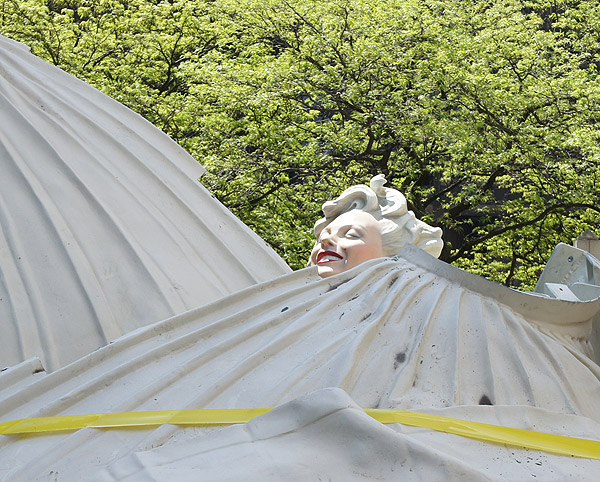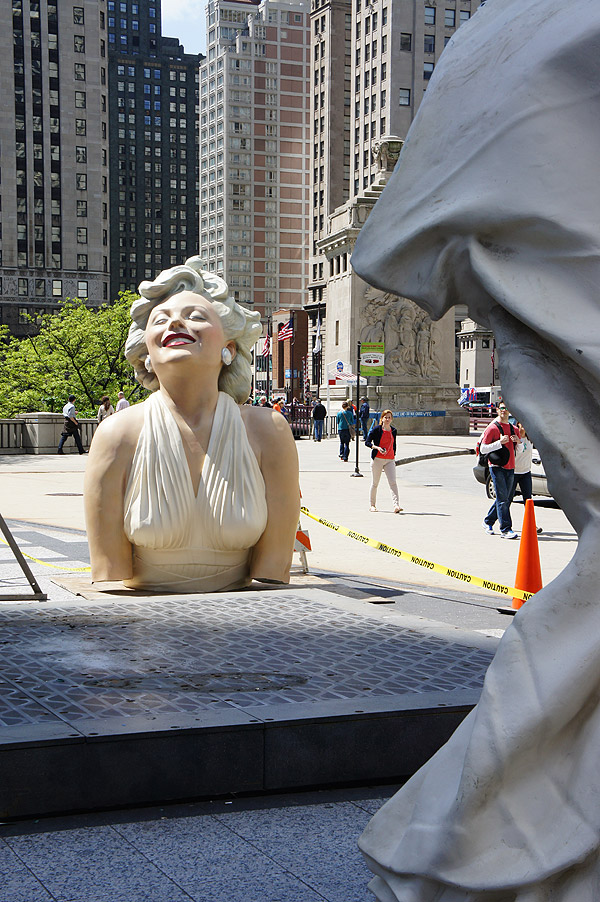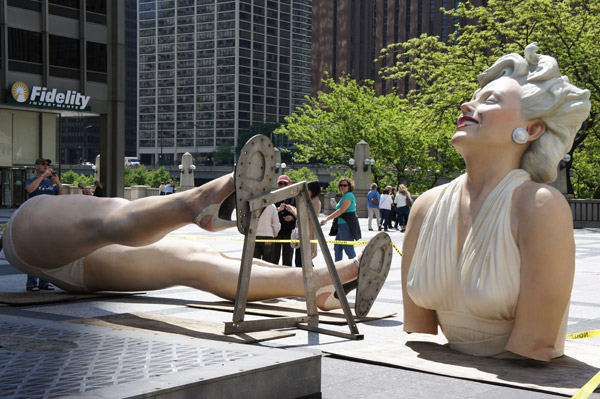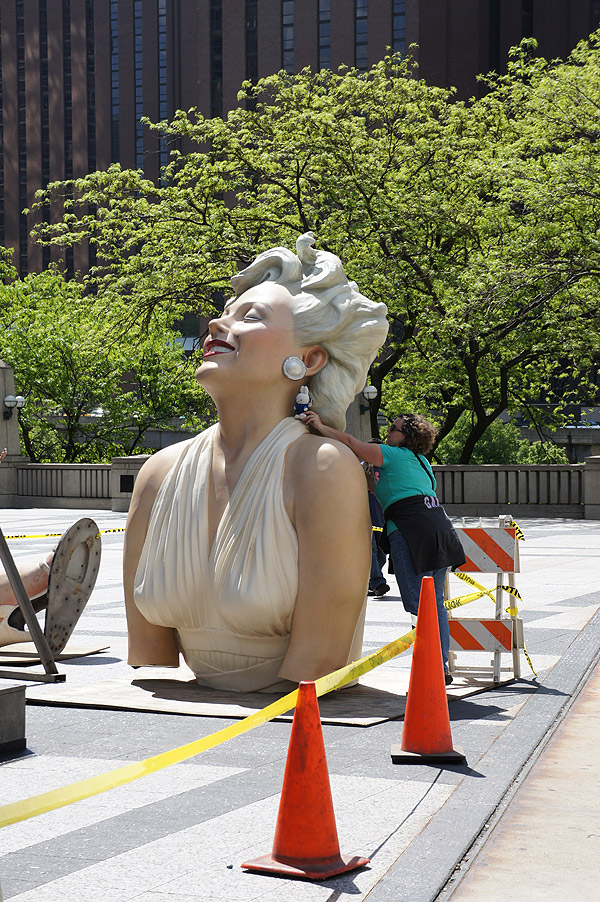
I never had quite as strong a reaction to the giant Marilyn Monroe sculpture as some did—I thought it looked like something out of a hybrid Lillian Vernon-Robb Report catalog, and that the sexism and objectification decried by Mary Schmich in one of her Pulitzer-winning columns was the inadvertant result of the artist scaling up his kitschy hyperrealism. To the extent that I had an emotional reaction at all, it was one of mild poignancy at the work of J. Seward Johnson, Jr., an artist from a very rich, very unhappy family…
The children were shunted off to boarding schools, and Mary Lea learned of her parents' broken marriage in a letter in 1937. "When he divorced Mom, it was the end of a chapter," she says. "It was like he divorced us too." Two years later Johnson married Esther Underwood (of the deviled-ham family), who gave birth to Jennifer, now 45, co-owner of a Manhattan art gallery, and James, 41, a painter.
[snip]
In pretrial affidavits, Basia's lawyers charged that Johnson had good reasons to disinherit his children: irresponsible spending by some of them and scandalous behavior by others. Relations between J. Seward and his eldest son had been strained for years following Seward Jr.'s humiliating 1964 divorce battle, during which Seward Jr. accused his wife of having driven him to attempt suicide and of inviting lovers to move into their home on two separate occasions, allowing each to "fondle" her in front of him.
…whose lite nostalgia gets some texture from his backstory.
Anyway, now it's leaving us. Since I like to know how things work, I find it a lot more interesting taken apart, even if it plunges even further down the uncanny valley.





